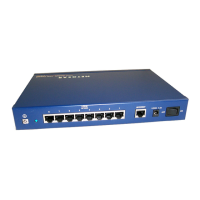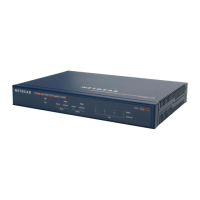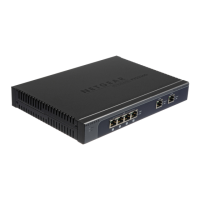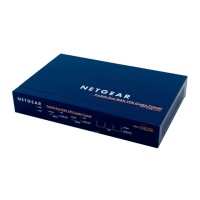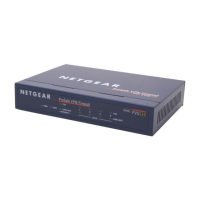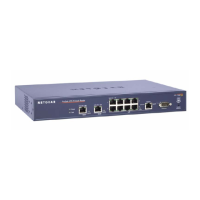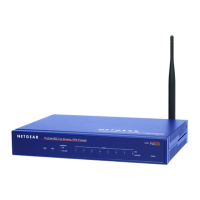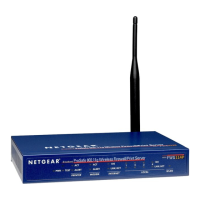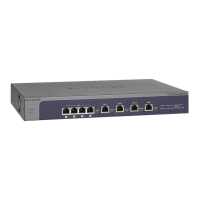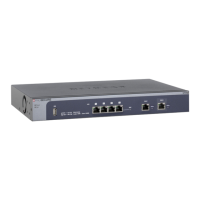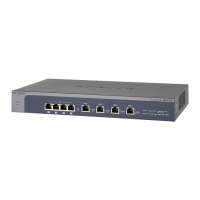Wireless Configuration and Security
85
ProSafe Wireless-N 8-Port Gigabit VPN Firewall FVS318N
security profile and SSID, allowing you to tailor access and security to a variety of wireless
clients.
The wireless VPN firewall provides wireless connectivity
to multiple wireless network devices
within a fixed range or area of coverage—interacting with a wireless network interface card
(NIC) through an antenna. Typically, an individual in-building wireless access point provides a
maximum connectivity area of about a 500-foot radius. The wireless VPN firewall can support
a small group of wireless users—typically 10 to 32 users.
Configure the wireless features according to the order of the following sections:
1. Configure the Basic Radio Settings
2. Configure and Enable Wireless Security Profiles
3. Configure Virtual Access Points
4. (Optional) Configure Wi-Fi Protected Setup
5. (Optional) Configure Advanced Radio Settings
Wireless Equipment Placement and Range Guidelines
The range of your wireless connection can vary significantly based on the location of the
wireless VPN firewall. The latency, data throughput performance, and notebook power
consumption of wireless adapters also vary depending on your configuration choices.
Note: Failure to follow these guidelines can result in significant
performance degradation or inability to wirelessly connect to the
wireless VPN firewall. For complete performance specifications, see
the Data Sheet on the NETGEAR website.
For best results, place your wireless VPN firewall according to the following general
guidelines:
• Near the
center of the area in which your wireless devices will operate.
• In an eleva
ted location such as a high shelf where the wirelessly connected devices have
line-of-sight access (even if through walls).
• A
way from sources of interference, such as PCs, microwaves ovens, and 2.4-GHz
cordless phones.
• A
way from large metal surfaces or water.
• Placing
the antennas in a vertical position provides the best side-to-side coverage.
Placing the antennas in a horizontal position provides the best up-and-down coverage.
• If you are
using multiple wireless VPN firewalls, it is better if adjacent wireless VPN
firewalls use different radio frequency channels to reduce interference. The
recommended channel space between adjacent wireless VPN firewalls is five channels
(for example, use channels 1 and 6, or 6 and 11, or 1 and 11).
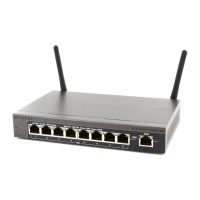
